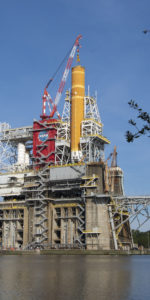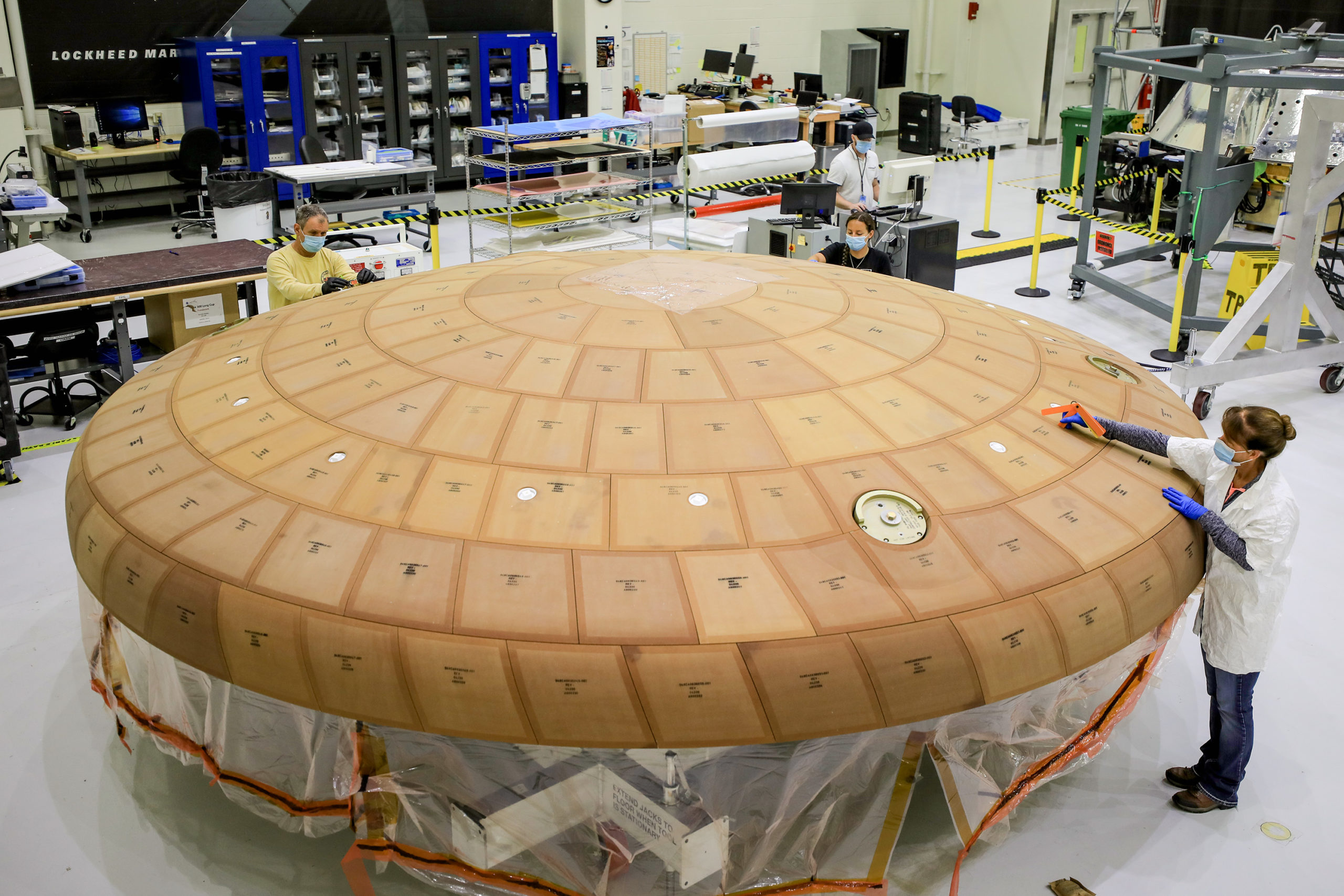
NASA has completed a significant milestone ahead of the Artemis-2 mission as it prepares to send the first humans around the Moon since Apollo 17 back in December 1972. The exact date for Artemis-2—currently envisaged as a ten-day voyage to lunar distance with four astronauts—has yet to be determined, but the likelihood that the uncrewed Artemis-1 atop the maiden Space Launch System (SLS) will not fly until late next year makes a 2022 or 2023 target increasingly probable. On Thursday, NASA announced that 186 “blocks” of ablative material have been applied onto the heat shield which will protect Artemis-2’s Orion Crew Module (CM) from temperatures approaching 2,800 degrees Celsius (5,000 degrees Fahrenheit) during its high-velocity return from the Moon.
The ablative material is known as “Avcoat” and was produced in the form of several large blocks at NASA’s Michoud Assembly Facility in New Orleans, La., before shipment to the Kennedy Space Center (KSC) in Florida to be machined into 186 unique smaller blocks. These were then applied by technicians onto the 16.5-foot-diameter (5-meter) heat shield’s underlying titanium skeleton and carbon-fiber skin. Unlike the Space Shuttle and other low-Earth-orbiting vehicles, which begin their entry into the atmosphere at close to 17,500 mph (28,200 km/h), the lunar-return velocities anticipated for Orion are expected to reach 24,500 mph (39,500 km/h), roughly equivalent to covering 36,000 feet every second.
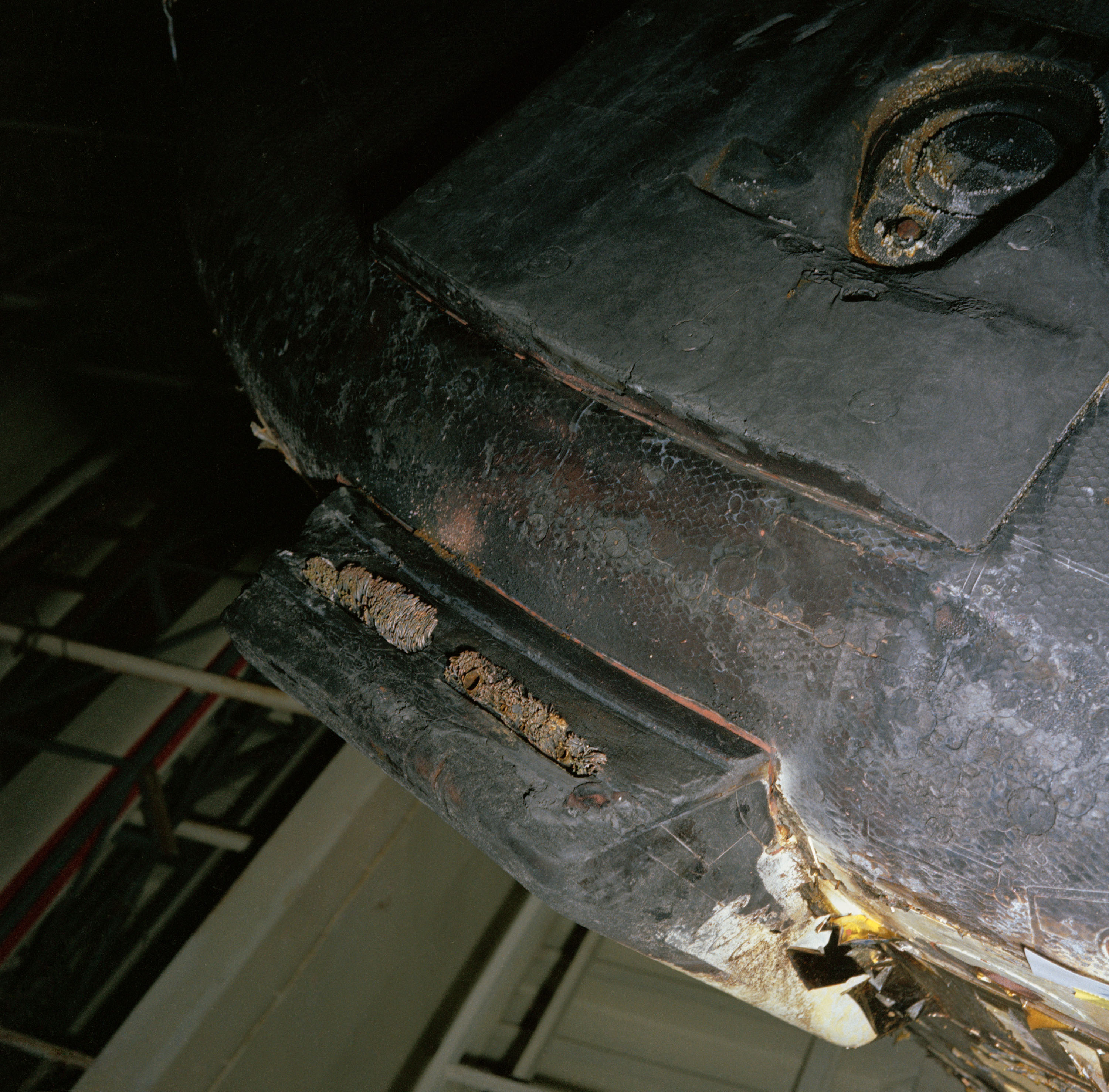
Guarding Orion against those withering extremes necessitated a particularly heavy-duty heat shield to get the job done. And the only such heat shields that have previously performed on human-rated lunar spacecraft were those at the base of the Apollo Command Module (CM) which brought nine crews of astronauts safely home from the Moon between December 1968 and December 1972.
The men who rode those command modules at such unimaginable velocities have left no doubt about the grandeur of the fireworks display to which they were treated. And three of them did so twice.
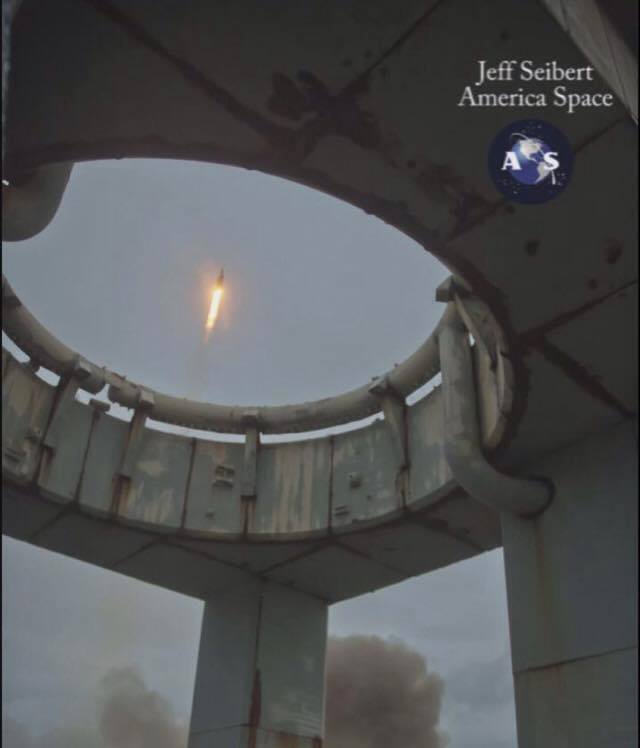
John Young, who returned from the Moon on Apollo 10 and Apollo 16, described in his autobiography Forever Young a “brilliant white plasma flow shimmering across the outside of the spacecraft” at Entry Interface. Fellow astronaut Gene Cernan, who rode with Young on Apollo 10 and later commanded Apollo 17, wrote in his memoir The Last Man on the Moon of a ball of white-violet flame that “slipped around us like a glove”, totally different to his previous Earth-return re-entry. Over a period of seconds, it rapidly intensified and “flew out behind us like the train of a bride’s gown”. Meanwhile, Jim Lovell—who flew the first mission to the Moon on Apollo 8, then commanded the unlucky Apollo 13—noted in his book Lost Moon that if the energy generated by this “infernal descent” was somehow converted to electricity, it would be enough to power the entirety of Los Angeles for a minute and a half.
With that in mind, the Artemis-2 heat shield has a tough job ahead. In September 2006, Boeing was selected to design a heat shield capable of providing the spacecraft with suitable re-entry protection from flights to lunar distance. Early options centered upon Phenolic Impregnated Carbon Ablator (PICA) and a raft of alternate technologies explored in subsequent contracts.
For more than three years, NASA’s Orion Thermal Protection System Advanced Development Project worked on eight candidate materials, before finally narrowing them down to the flight-proven PICA and Avcoat, the latter of which had been utilized previously as a heat shield component for the Apollo command module.
At length, in April 2009, NASA selected Avcoat—a material composed of silica fibers with an epoxy-novalic resin, filled in a fiberglass-phenolic honeycomb and manufactured directly onto Orion’s heat shield substructure and installed as a complete unit onto the Crew Module—which was described as “the more robust, reliable and mature system”.
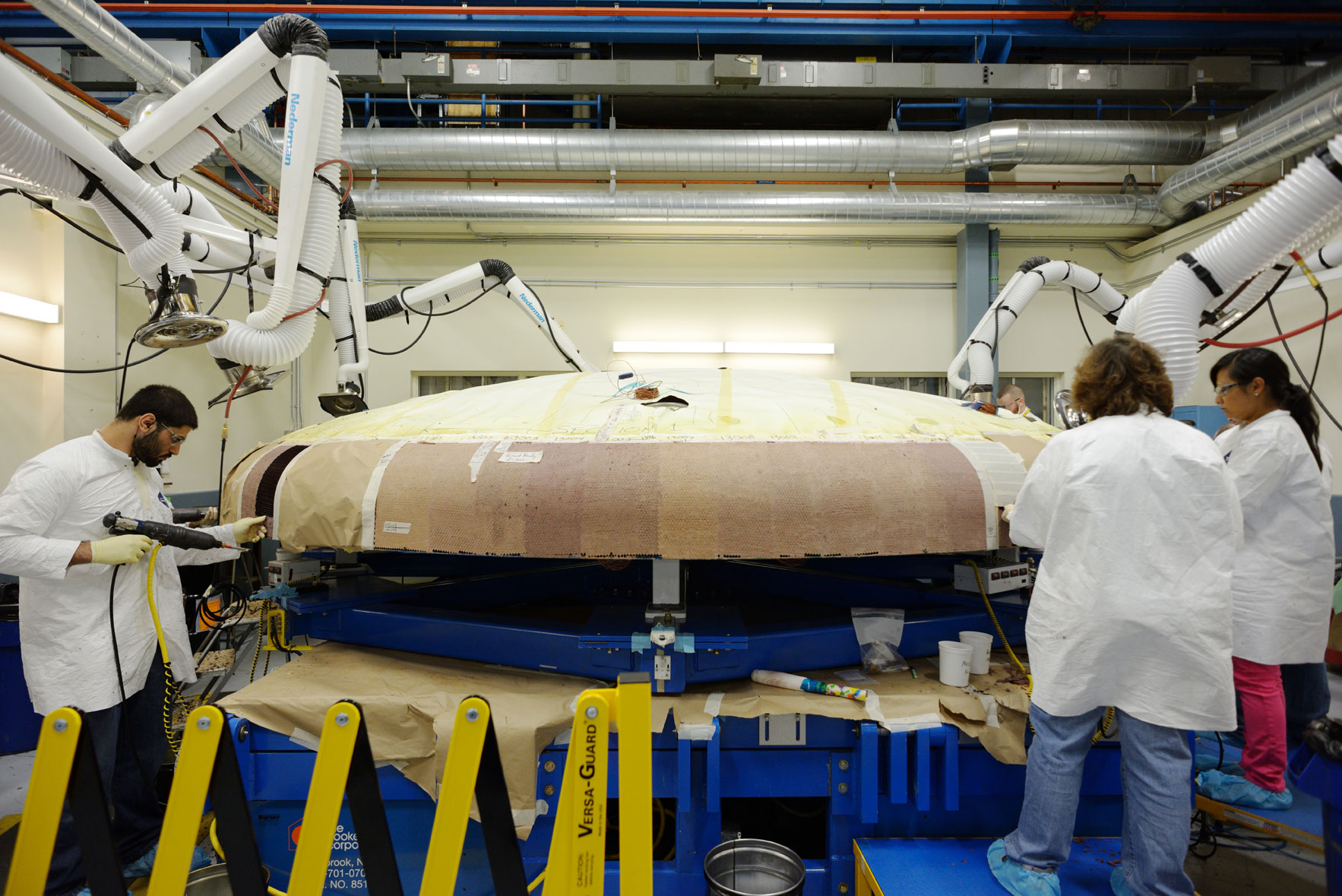
“The biggest challenge with Avcoat has been reviving the technology to manufacture the material such that its performance is similar to what was demonstrated during the Apollo missions,” remarked John Kowal, manager of Orion’s Thermal Protection System (TPS) at the Johnson Space Center (JSC) in Houston, Texas, speaking in 2009. “Once that had been accomplished, the system evaluations clearly indicated that Avcoat was the preferred system.”
The shield was first tested at the end of Orion’s inaugural “shakedown” cruise into high Earth orbit, Exploration Flight Test-1 (EFT-1) in December 2014. Returning home at a blistering velocity of over 20,000 mph (32,000 km/h)—far more severe than a shuttle re-entry—Orion endured temperatures which peaked at 2,200 degrees Celsius (4,000 degrees Fahrenheit), about four-fifths as much as it would see on a lunar-return flight. Initial tests of the EFT-1 heat shield revealed that, as intended, about 20 percent of the Avcoat ablated correctly from Orion during re-entry, before more extensive evaluations got underway at NASA’s Marshall Space Flight Center (MSFC) in Huntsville, Ala., in March 2015.
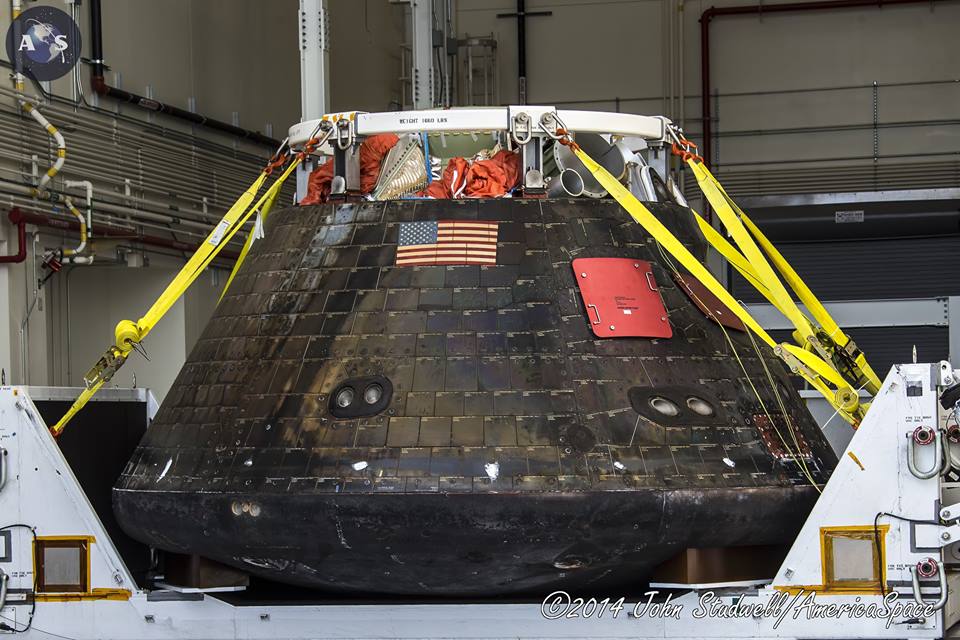
Notably, next year’s Artemis-1 mission and, beyond it, Artemis-2, will have to contend not only with a higher return velocity and greater heat flux than EFT-1, but also the challenges of operating in the harsh radiation environment of “cislunar space”, the region between Earth and the Moon.
The EFT-1 experience also prompted a decision in September 2015 to assemble the Artemis-1 and subsequent base heat shield material into over 180 blocks in order to ease the labor-intensive manufacturing process.

With Artemis-1 hardware currently deep into processing, the heat shield for Artemis-2 was airlifted from prime contractor Lockheed Martin’s facility near Denver, Colo., in July of last year, aboard NASA’s Super Guppy for assembly and integration with the Orion Crew Module. Upon arrival at KSC, it was taken to the Neil Armstrong Operations & Checkout facility high bay for work to commence. By September, the agency noted that Crew Module hardware integration was well underway.
Moving forward on the Artemis-2 heat shield, NASA noted that engineers will conduct non-destructive evaluations to search for “voids” in the bond-lines, as well as measuring the steps and gaps between the blocks. Any blocks will be filled with adhesive material and reassessed. Additionally, the entire heat shield—which weighs some 5,000 pounds (2,270 kg)—will undergo thermal testing, ahead of being sealed, painted and taped to help it effectively weather on-orbit thermal conditions. Later this year, the complete heat shield will be installed onto the Artemis-2 Crew Module.
.
.
FOLLOW AmericaSpace on Facebook and Twitter!
.
.
Missions » SLS » Artemis »




